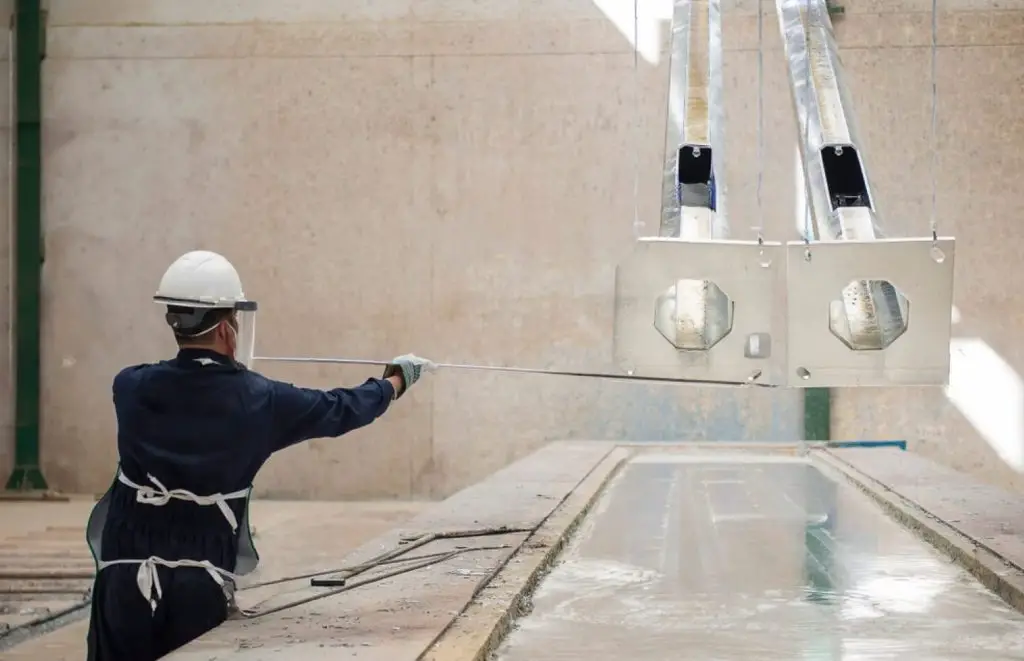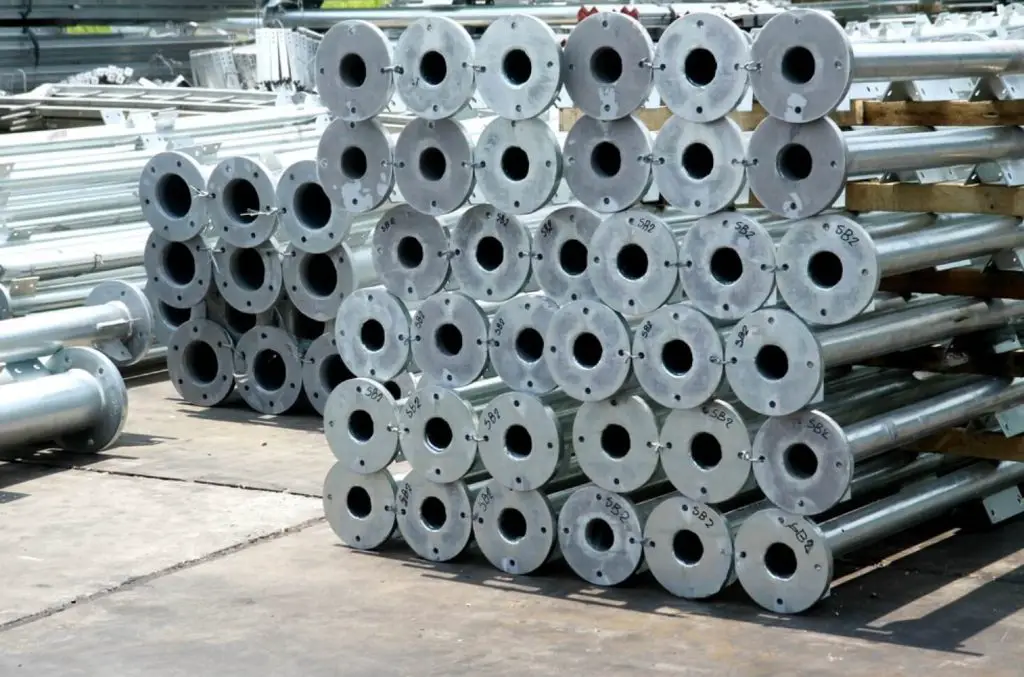Table of Contents
What is the Method Statement for Hot Dip Galvanizing?
A Method Statement for Hot Dip Galvanizing is a document that outlines the step-by-step procedure and safety measures to be followed when hot-dip galvanizing steel structures or components.
Introduction
Hot dip galvanizing is a widely used metal finishing process that involves the coating of steel or iron with a layer of zinc. The zinc layer serves as a protective barrier against corrosion, rust, and other environmental factors that can damage the underlying metal.
To ensure that the process is carried out safely and effectively, it is necessary to have a detailed method statement that outlines the various steps involved in the process. This article will describe the different stages of hot dip galvanizing process and the required safety precautions to be undertaken.
Preparatory Works
Before starting the hot dip galvanizing process, it is important to carry out the necessary preparatory work. These include cleaning, degreasing, and acid pickling of the steel surface to remove any rust, dirt, and other contaminants that may hinder the adhesion of the zinc coating.
In addition, it is important to ensure that the galvanizing plant is in good working condition and that all necessary safety equipment is available.

Safety Precautions
Safety is a fundamental consideration in any galvanizing process. Before starting the process, adequate safety measures should be taken to minimize the risk of accidents or injuries. This may include the provision of personal protective equipment (PPE), safety training, and emergency procedures.
Workers should also be informed about the potential hazards and dangers associated with the use of chemicals, high-temperature environments, and heavy machinery.
Surface Preparation
Surface preparation is an important stage in the hot dip galvanizing process. It involves cleaning and degreasing the steel surface to remove any debris, grease, or other contaminants.
This stage may involve the use of solvents, alkaline cleaners, or degreasing agents to ensure that the surface is clean and free from any impurities. After cleaning, the steel is pickled in acid to remove any remaining scale, rust, or other oxides that may be present on the surface.
Galvanizing Process
Once the surface has been cleaned and pickled, the steel is ready for hot dip galvanizing.
Hot Dip Galvanizing Tank
In the galvanizing plant, the steel is dipped into a bath containing molten zinc. The tank is heated to a temperature between 440 and 465°C to ensure that the zinc remains molten.
The temperature is carefully monitored to ensure consistent deposition of the zinc coating. The bath composition, including the composition and concentration of the zinc, is controlled to ensure that the coating meets the required industry standards.
Pre-Treatment Steps
Before the steel is immersed in the zinc bath, it undergoes several pre-treatment steps. Firstly, it is immersed in a flux solution, which is a mixture of zinc ammonium chloride and ammonium chloride.
This step helps to remove any remaining oxides and prepare the surface of the steel for the deposition of zinc. Secondly, the steel is dried to remove any excess flux solution and ensure a clean surface.
Immersion in Zinc Bath
The steel is then immersed in the molten zinc bath for a specified period of time, depending on the size and thickness of the item being galvanized. The galvanizer must ensure that the steel is completely immersed, and the zinc covers all surfaces of the steel, including hidden or recessed areas.
The steel is then removed from the zinc bath and drained to remove any excess zinc. An inspection is carried out to inspect for any defects or holes that may require further processing to ensure complete coverage.
Post-Treatment Procedures
After the zinc coating is deposited on the steel, it is important to carry out several post-treatment procedures to ensure the quality and longevity of the coating. These steps may involve quenching the steel in water to cool it down and prevent the zinc from flaking off.
An inspection is carried out to identify any defects or inconsistencies in the coating, and corrective measures are taken to address any issues. Before the coated steel is delivered to the customer, the surface is prepared for finishing by sandblasting or other methods.

Health, Safety, and Environmental Considerations
Hot dip galvanizing involves the use of chemicals and high-temperature environments that can have an adverse impact on worker safety and the environment. Galvanizers must ensure that all safety and environmental regulations are followed, and proper disposal procedures are carried out.
In addition, adequate ventilation and environmental monitoring should be carried out to ensure that workers are not exposed to harmful fumes or gases.
Equipment and Tools
Hot dip galvanizing requires the use of specialized equipment, including galvanizing tanks, lifting and handling equipment, and testing equipment and instruments. The equipment must be properly maintained and regularly inspected to ensure that it is in good working condition.
Quality Assurance
Quality control is an important aspect of the hot dip galvanizing process. Galvanizers must carry out thorough inspections of the coated steel to ensure that it meets the required industry standards and customer specifications.
The inspection process may involve visual inspections, thickness measurements, adhesion tests, and other non-destructive testing methods. Comprehensive documentation of the entire process, including quality control measures and test results, is necessary to provide the necessary traceability and assurance of quality standards.
Conclusion
Hot dip galvanizing is a proven method of protecting steel from corrosion and rust. However, it is an inherently hazardous process that requires careful attention to safety, environmental, and quality control measures.
A method statement for hot dip galvanizing provides the necessary guidance and framework to ensure that the process is carried out safely, efficiently, and effectively, while meeting the required industry standards and customer specifications. Adherence to the outlined method statement, in conjunction with a rigorous quality control and documentation process, ensures the long-term durability and performance of the galvanized products.
tag: # Method Statement for Hot Dip Galvanizing

